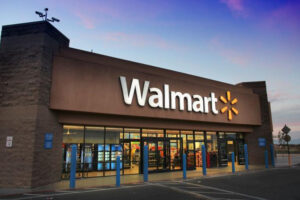Startups need to respect the laws of retail physics
Startups like Warby Parker, Bonobos and Casper have proven that it’s possible to build a modern brand predominately using digital tools. As a result, a flood of early-stage tech VCs have barged into the market like Walmart shoppers on Black Friday.
Andy Dunn of Bonobos recently christened this class of company as Digitally Native Vertical Brands, or “DNVBs.” His basic definition of a DNVB is “a brand born on and primarily experienced via the internet that features a vertically-oriented business model which combines the margin of the retailer and brand.” It’s a great definition of the “Warby for X” phenomena.
Many of these companies have far surpassed typical growth expectations for a CPG company. We’ve seen DNVBs reach $100 million in sales in a couple of years in a variety of categories — eyeglasses, razors, mattresses and food, just to name a few. However, these brands need to respect certain set irrefutable laws of retail physics: exit caps, modest multiples and price erosion in the face of slowing growth and increasing competition.
Respect the absolute exit cap
I see many founders negotiating huge funding rounds at eye-popping valuations without taking the time to ask what that valuation entails. Many founders are signing term sheets that will implicitly require them to become the leader in their industry, often by a wide margin, to justify the price. Smart founders are very cognizant of this reality, price themselves conservatively and raise capital consistent with the most likely exits.
This is a key reality founders need to internalize. The buyers in old-line CPG markets tend not to make splashy acquisitions — you don’t hear about Coach buying a new handbag line for $2 billion. The stock market doesn’t reward big acquisitions in these categories as they often do with Silicon Valley giants, and they’re expected to justify these purchases, at least partially, on financials. This massively constrains the realm of possible outcomes.
For instance, if the largest company in a space has a market cap of $2 billion, it will be almost impossible for them to pay $1 billion to buy a competitor. Even $500 million is a stretch. Maybe $200 million, but many startups price themselves out of that price range. There are virtually no pre-revenue acquisitions in these markets. Founders can handwave past many VCs, but acquirers will be much more focused on your gross profitability rather than grand visions.
There is money to be made in these categories, but if overly financed, these businesses will fail to yield a return to investors, employees and founders. Consider that most big CPG brands of the last decade or so were largely bootstrapped, e.g. Chobani.
“Meh” multiples
Big exits are even harder to come by when you consider the average exit multiple for a branded company, and e-commerce more generally, isn’t great.
Take a company like ThinkGeek. It was an e-commerce company that sold tchotchkes to nerds based on licensed properties like Star Wars and Minecraft. They also designed and sourced many of their products. It’s not a stretch to say the company was a DNVB for geek culture. They were ultimately acquired for $140 million by GameStop. This sounds like a great win for a niche e-commerce brand, but they also had revenues of over $140 million — a 1X multiple.
Tech companies earn big multiples when they build an asset that is deeply technical (e.g. Cruise Automation) or has huge network effects (e.g. Snapchat). Absent a similar differentiator, DNVBs and e-commerce companies will garner non-tech multiples in the 1-4X sales range.
As such, founders need to build more revenue in order to justify a larger sale. Unfortunately, many founders raise capital to finance that growth, which in turn increases the size of the exit required to make a sale work.
Respect the laws of DNVB physics
A founder said to me the other day, “You’re the first VC in three years to ask to see a model.” Many early-stage VCs seem to think it’s taboo to ask for a model. There has been a pervasive belief that “traditional metrics don’t apply.” Taken to the extreme, this is dangerous.
We shouldn’t make our decisions solely off models, but they help illuminate the way a founder thinks about their business. The math is necessary to ensure that everyone can win along the way. These types of DNVB businesses live and die based on their models.
Founders can’t rely on viral coefficients, strong network effects or deep technology moats to justify stratospheric valuations. Instead, they need enough gross margin to ensure that they can afford ever-increasing acquisition costs and create enough cashflow to fund expansion.
It varies by business, but DNVB startups generally need 2-3X the acquisition cost in margin to succeed. The CEOs of DNVBs obsess over creating the perfect Facebook ad featuring photogenic models, but they really need to spend more time honing their financial model in Excel.
If you’ve built a genuinely disruptive market leader or if you have a Bezos-esqe ability to leverage public markets, you can ignore this advice. However, if you’re in a business that’s more likely to be acquired than IPO, you need to start thinking carefully about who the acquirers in your business are, what their track record of acquisitions look like and what kinds of prices they tend to pay.
In the more traditional tech world, one can paint a picture of an uncapped future. Facebook has the ability to monetize a seemingly infinite amount of content. On the other hand, the market for goods is finite. Only so many bags or shoes can possibly be sold, and this presents inherent market caps and thus, exit caps.
Capital efficiency is key
Fortunately, capital is available for these DNVBs. There will be a whole new generation of great brands created in the coming years. There are many great investors leaning into these opportunities, including us. But I’d suggest that founders in these categories look for modest valuations and bootstrap as much as possible.
Nailing the right product and brand messaging isn’t easy — it’s more art than science. Building a model is equally hard, but is within reach of anyone who can open a spreadsheet. Take the time upfront to get that right rather than rush to raise capital. Learn to love the laws of retail, or you’ll learn the hard lesson that today’s hot seller is tomorrow’s bargain bin special.
From: Tech Crunch




